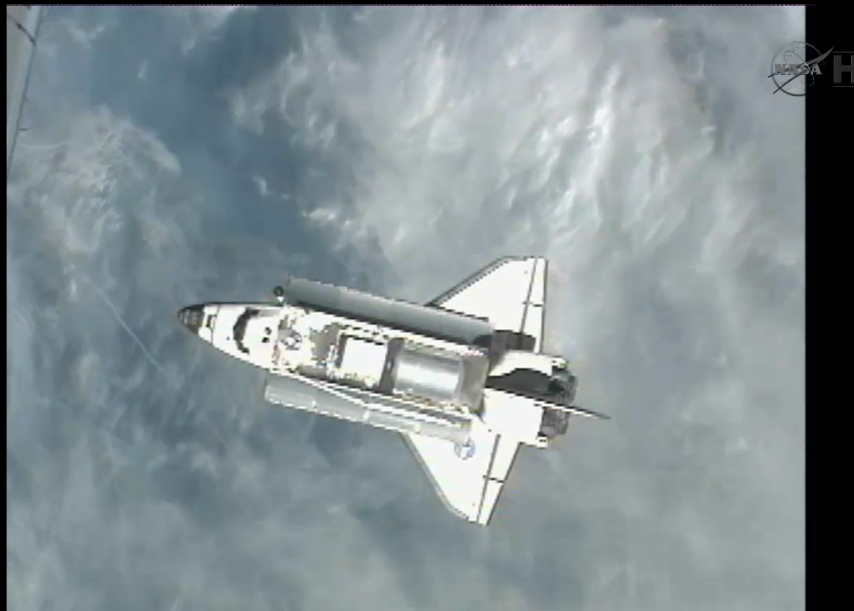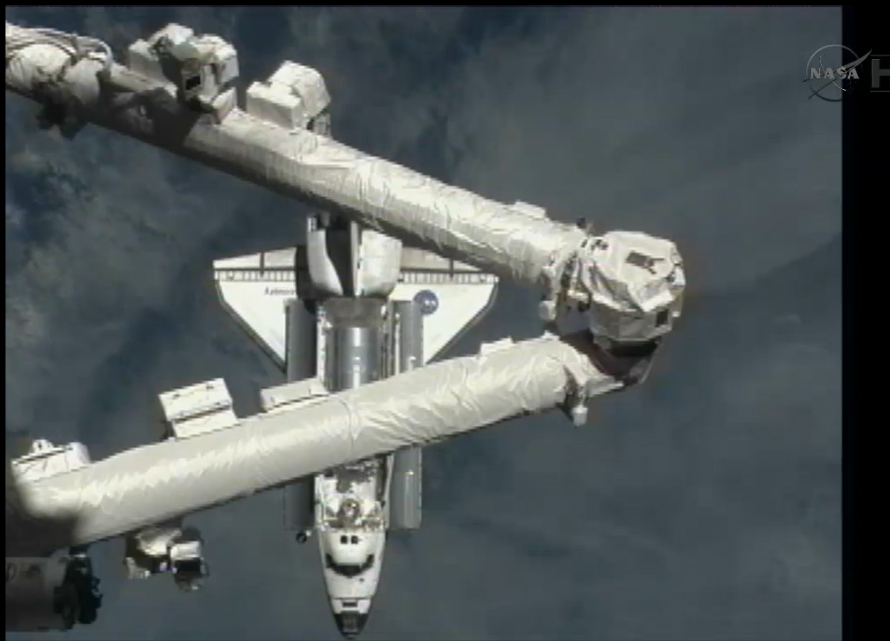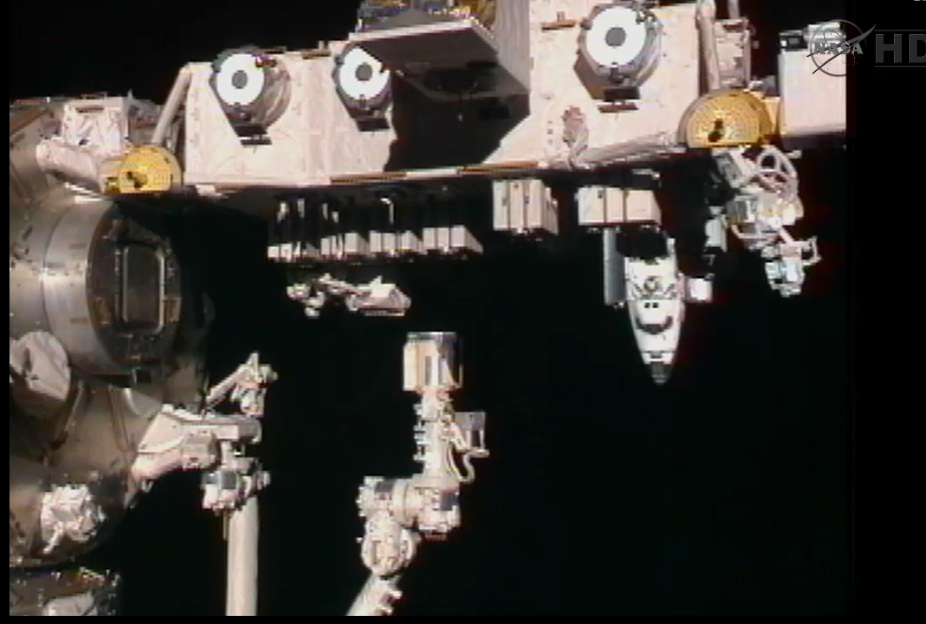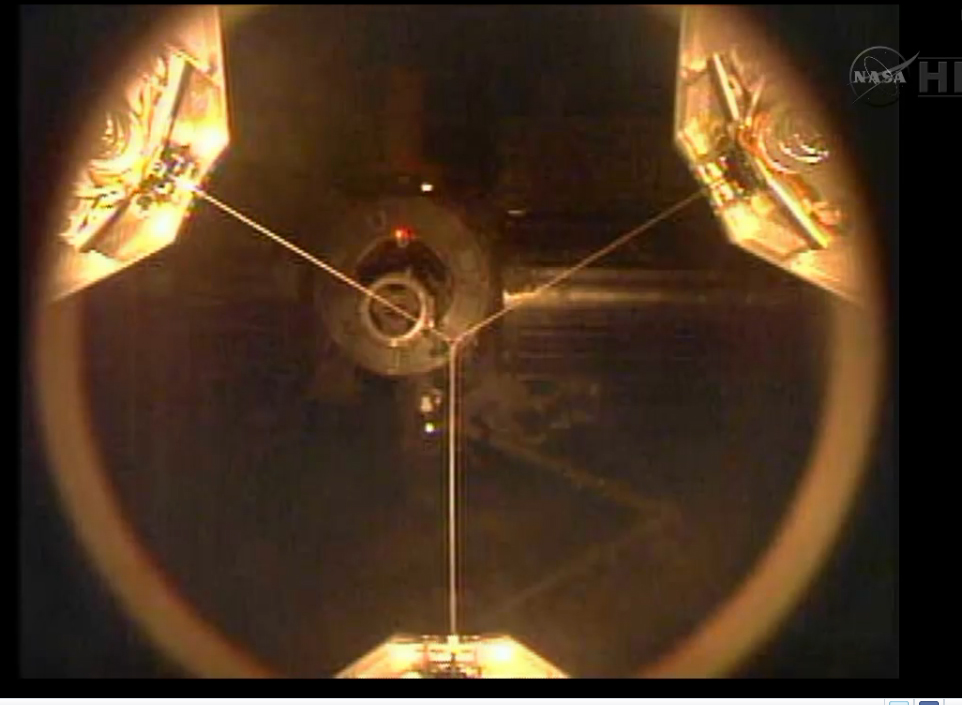An Era is Slowly Ending…

Those of you who were born in the early 1980s and after have always had sights like these to define what “near-Earth” space exploration looks like. For the past 30 years, shuttle launches and delicate orbital ballets have been standard fare for us all to watch.
But, as we all know, that time and those missions are coming to an end. The last space shuttle flights are taking place in the next few months, and after that, the orbiters will fly no more. At least, that’s the current plan.
I’m not going to weigh in here on the relative merits of the next stage of U.S. space exploration hardware and missions, other than to say that we don’t have much tin being officially bent to take PEOPLE to space again anytime REAL soon. Yes, there is the private sector activity, which I watch with great interest. It will be interesting to see just how it all plays out. And, if it’s possible, I’ll try to make my way to space on a future “tourist flight” since I’m not likely to be picked as a “citizen journalist-astronaut” or “blogger-naut” or “Tweeter-naut” or whatever it is they’ll call them (if they come into being). Access to space, even 60 years after the first human flights, is still deemed a pretty risky and expensive proposition for all but the most fit (or, in the future probably, the most politically connected or wealthy).

But, for all of us who “grew up” watching space shuttles loft to space, dance in orbit, take astronauts to the space station, deliver repair parts for Hubble Space Telescope, and many, many other important missions, these flights ARE the end of an era. So, what can be more profound than to note that change in space flight status with a few views of today’s docking of Discovery with the International Space Station? Enjoy!
As the shuttle slowly put itself into position for the docking, which took place at 1:14 CST today, I was reminded of a plane coming into the gate at an airport. For all the hundreds of times I’ve landed at airports, and watched as the retractable jetway was steered out to nestle next to the plane by a gate agent, it never occurred to me how familiar it would look as our own “space plane” would cuddle up next to the ISS.

But, there it was, earlier today, gliding into position just as if, for all the world, it was another flight landing and delivering a planeload of passengers and cargo. In fact, as I watched, the lyrics to the Alan Parsons Project song “I Can’t Look Down” from On Air, ran through my mind: Another passenger, “Your baggage thank you sir”… even though I’m not afraid to fly and would just about give anything to go to space. I wish it were as commonplace as flying to LA or London or Paris is for many people. And that it cost about the same. I’d so be there.

As I write this, the shuttle and ISS are docked together, and the astronauts will soon begin their work of ferrying new modules and equipment to the space station. Right now they’re waiting while some relative motions and shaking die to down — a teachable moment in physics, actually, for anyone who wants to live and work in space some day (or has ever pondered what it would be like). Objects have mass, they gain momentum, and when you work with them in space, you have to take those factors into account.
In a sense it’s an everyday “fly to work, deliver the goods” kind of mission. But it’s also momentous. It’s the last time Discovery flies to the space station. It’s the last mission for this venerable orbiter, which will return to Earth in a few days’ time and probably take up residence as an exhibit somewhere. And, for those of us who grew up in its era, it’s a surreal and unreal time — we know that this is all coming to an end. And, at least some of us are eagerly awaiting the next level of exploration. Space travel is inevitable; the idea has mass and it’s gaining momentum. Now, how do we take them into account as we plan our next steps to space?

